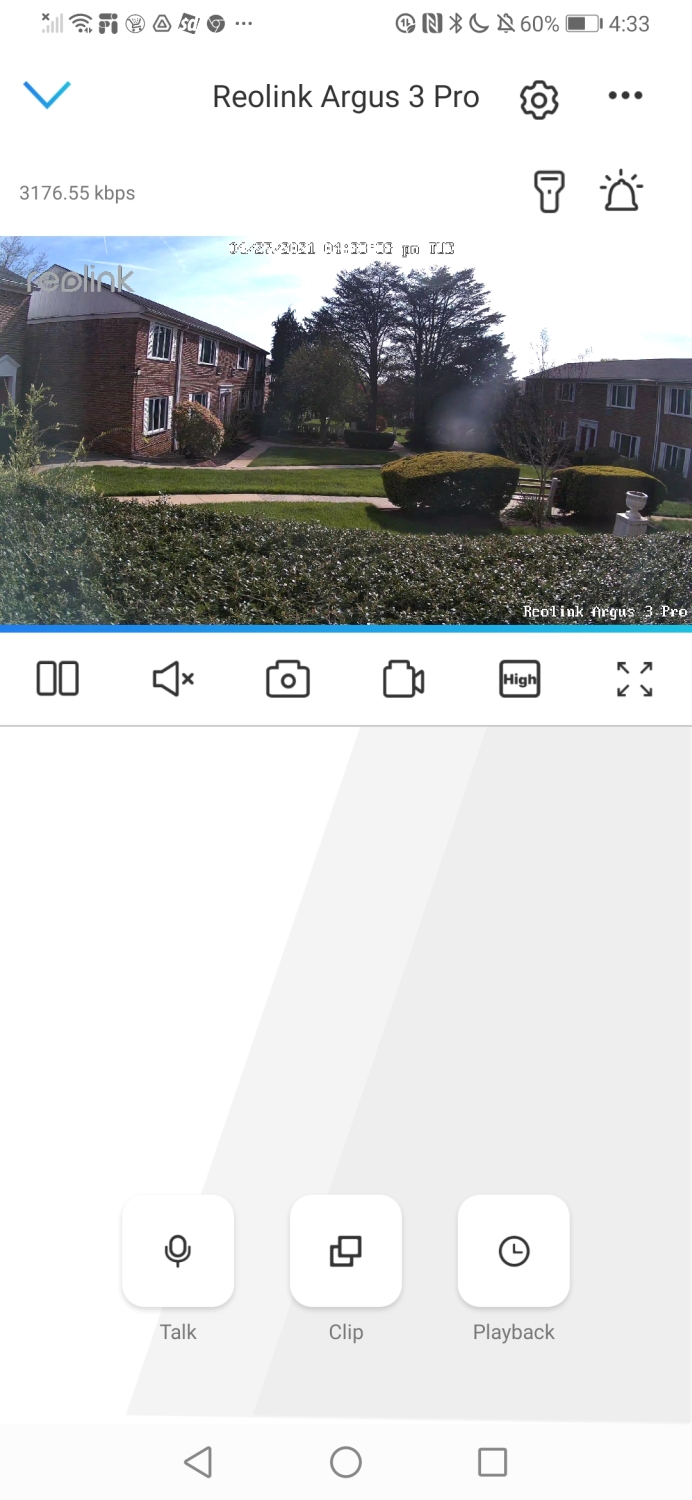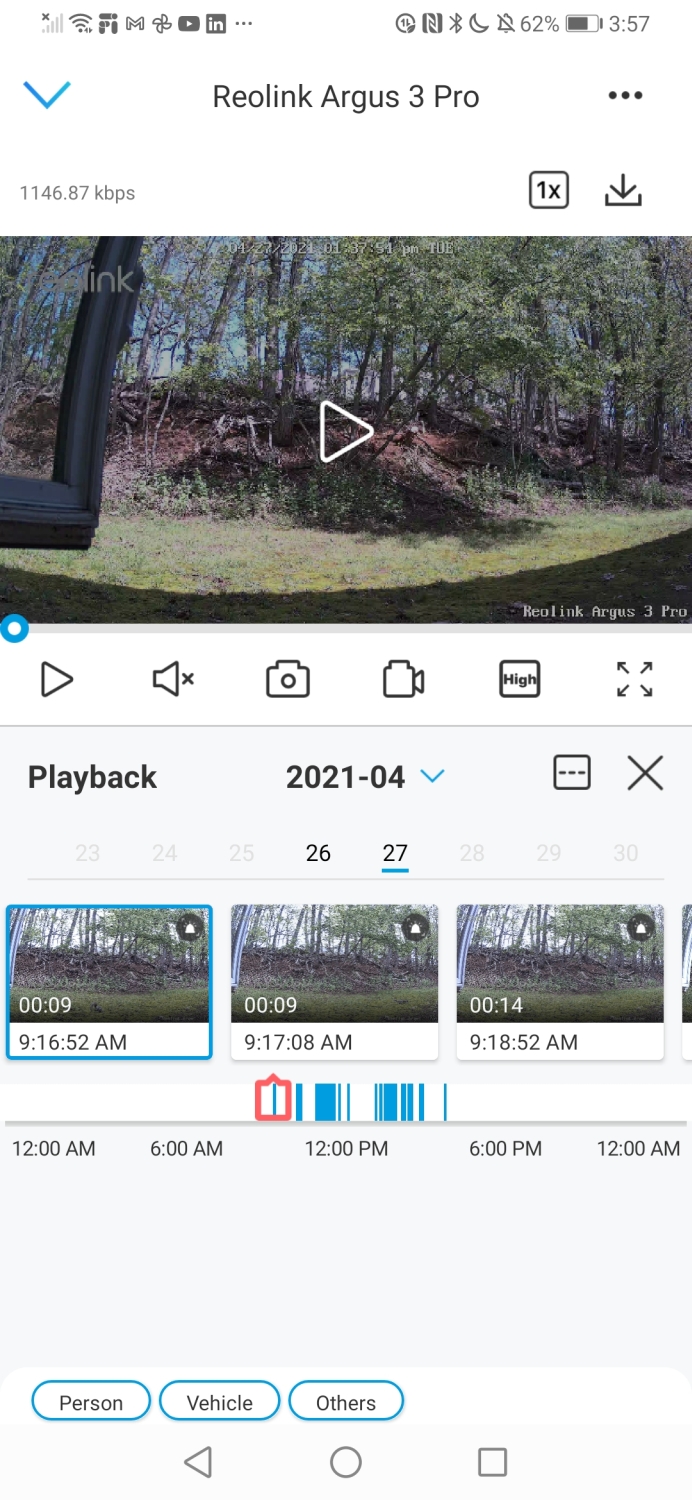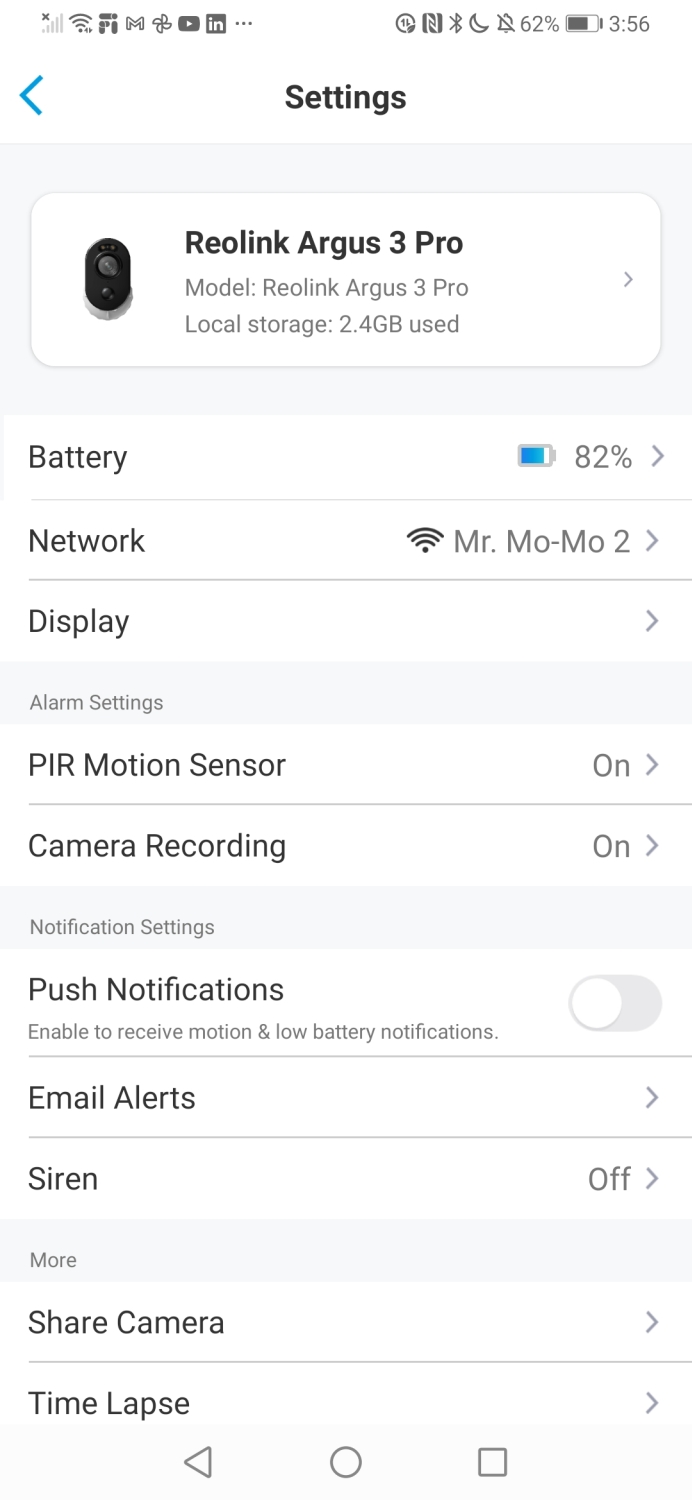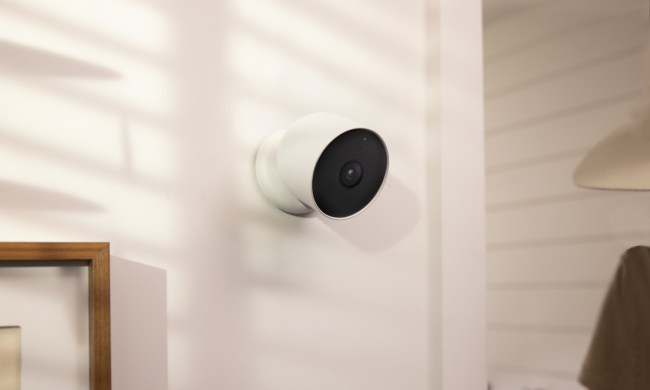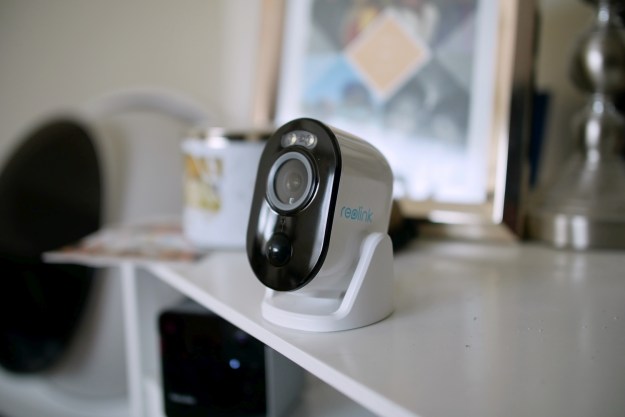
- Crisp-looking 2K video footage
- Excellent night vision performance
- Solar panel add-on doesn't cost a lot
- Easily converts into an indoor camera
- Weak dynamic range
- Antiquated-looking app
Reolink has been in the security camera business for quite some time, going as far back as 2009, when it launched its first camera. Since then, it has produced countless cameras, both indoor and outdoor, that have catered to a wide range of people. Despite its commitment to offer a broad range of devices, none of Reolink’s products has achieved notoriety like some of its competitors’ offerings.
If you’ve been eying outstanding outdoor security cameras like the Arlo Pro 4, the Reolink Argus 3 Pro will certainly make the decision a bit tougher. Packed with 2K video capture, color night vision, local storage, and even power from a solar panel, it’s chock-full of goodies that may tempt you with their sub-$150 cost.
Razor-sharp 2K video capture
When you’re so used to getting 1080p footage from security cameras, the move to something with higher resolution is quite a shock. That’s exactly how I felt checking out the Reolink Argus 3 Pro’s 2K video footage, which, at a resolution of 2560 x 1440 pixels, delivers razor-sharp results that exceeded my expectations. I’m rarely ever moved by security camera specs, especially when it comes to resolution, but in checking out the footage, the difference was immediately visible.

Fine details are well represented throughout the scene, and they still retain good clarity when using a digital zoom to inspect something closer. I was honestly surprised by how good the footage looks, even with a digital zoom. The only complaint is that colors tend to be subdued, and highlights appear a bit blown out. Otherwise, it’s really good quality, despite the slower 15 frames-per-second (fps) rate — but this doesn’t affect video performance when the lighting conditions are ideal.

Equally outstanding is the night vision performance from its 4-megapixel 1/3-inch CMOS sensor. The black-and-white footage is extremely detailed and illuminates well over 25 feet from where it’s perched. There’s the option for color night vision, which draws out colors for even better clarity, but it does require some ambient light in order to work. There’s a bright spotlight in the Argus 3 Pro that can be activated whenever motion is detected, but I honestly don’t mind the black-and-white footage because it’s so sharp. The only complaint I have is that it has a narrower 122-degree field of view, which is less than some of its competitors.
Antiquated-looking app interface
Launching the Reolink app for Android is a trip back in time because it’s so antiquated looking, from the way the interface is laid out to the generic looking on-screen icons. At the very least, you get a good look at what the camera is looking at whenever you access the livestream — with corresponding buttons to manually capture a photo or video. Most of the camera’s settings are accessible by tapping on the settings icon in the top right corner of the app.
The Playback section of the interface is where the camera organizes all of the footage it’s captured due to motion detection. It’s organized in a timeline view, so you can see all the clips from a particular day. However, many of the thumbnails in this timeline view take a long time to load — so there’s some time required before they’re populated. Thankfully, you can filter the clips by what’s been detected, so that includes people, vehicles, and a general “others” category.
While the interface is functional, I would like to see a cleaner, more modern-looking application. This one is simply too much of a retro return to the style of Windows PCs from the 1990s.
Indoor and outdoor flexibility
Even though it’s positioned as an outdoor camera, I really enjoy how the Reolink Argus 3 Pro can convert into an indoor one out of the box — a key point I want to make because other outdoor cameras don’t have this kind of flexibility. That’s because it comes packaged with a stand bracket that props it in place for indoor use on a shelf, table, or other flat surface.
I was honestly surprised by how good the footage looks, even with a digital zoom.
At first glance, it very much has the styling of an Arlo camera, but the Argus Pro 3 is a bit shorter. Its IP65 weatherproof construction ensures it’ll withstand anything the elements have in store for it, while a hidden microSD slot on its underside offers users the beauty of local storage. I’m really happy that it does save footage locally, but just know that there’s a free basic plan you can subscribe to that covers seven days of cloud video history for one camera — with a cap of 1GB of cloud storage. For even more storage, you’ll need to upgrade to the $3.49 standard plan that ups it to 30 days of video history and support for up to five cameras.

The last noteworthy thing that needs to be mentioned is battery life. After a full day’s use, its battery level came in at 85% capacity, which means it would be completely depleted before the seventh day. (In my experience, it was nearly drained by the fifth day.) You can purchase the solar panel as an add-on for $25, which extends the battery for a longer period of time.
Our take
While not perfect in every way, the Reolink Argus Pro 3 has an enticing package that rivals top-tier cameras like the Arlo Pro 4. It offers excellent clarity and details while providing all the comforts of any modern camera in a package that doesn’t exceed $150. For that amount, it’s really tough to come by a camera that offers 2K video resolution, color night vision, and a solar panel that’ll reduce the number of times you’ll have to recharge it.
How long will it last?
As I mentioned earlier, its IP65 rating makes it perfect for outdoor weather. Unlike its rivals, Reolink offers a generous two-year limited warranty that covers it from defects.
Is there a better alternative?
For the cost, it’s tough to find an outdoor camera with these specs and flexibility in being used both inside and outside of the home. However, despite its higher cost, the Arlo Pro 4 still has an edge because of its superior dynamic range. It’s better equipped for high-contrast scenes, which are problematic with Reolink’s camera.
Should you buy it?
You should absolutely buy it because of its superb video quality and the savings you’ll get in the process.

